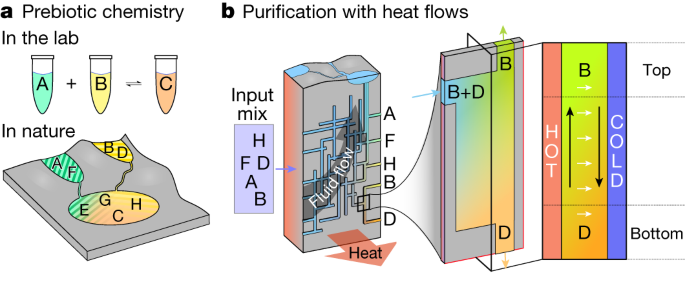2024-04-04 スイス連邦工科大学ローザンヌ校(EPFL)
<関連情報>
- https://actu.epfl.ch/news/nanodevices-can-produce-energy-from-evaporating–2/
- https://www.cell.com/device/fulltext/S2666-9986(24)00059-0
ハイドロボルテック・デバイスの最適化に向けた塩濃度依存性界面現象 Salinity-dependent interfacial phenomena toward hydrovoltaic device optimization
Tarique Anwar,Giulia Tagliabue
Device Published:March 05, 2024
DOI:https://doi.org/10.1016/j.device.2024.100287
Highlights
- Ion-concentration-dependent surface charge and ion mobility lead to more VOC peaks
- A high power density output of 8 μW/cm2 at 0.1 M is demonstrated
- Evidence of ion adsorption and charge inversion for several monovalent cations
- Geometrical asymmetries in the device structure augment hydrovoltaic performance
The bigger picture
Evaporation-driven (ED) fluid flow in porous or nanostructured materials has recently opened a new paradigm for renewable energy generation by converting thermal energy into electrical energy via an electrokinetic pathway. Performance improvements have been largely driven by the optimization of the electrode contacts. Yet, major fundamental questions remain regarding the interfacial phenomena governing hydrovoltaic (HV) devices, particularly concerning the geometrical and chemical characteristics of the system. Together with the lack of modeling tools, this limits the performance and application range of this emerging technology. Overall, our work, which lies between single-nanochannel studies and macroscale porous-system characterization, demonstrates that EDHV devices can operate across a wide range of salinities, with optimal operating conditions being dictated by distinct interfacial phenomena. Thus, it offers crucial insight and a design tool for optimizing EDHV devices.
Summary
Hydrovoltaic (HV) devices are an emerging technology for sustainable energy generation. By leveraging ordered arrays of silicon nanopillars (NPs) and developing a quantitative multiphysics model, this work reveals the complex interplay of surface charge, liquid properties, and geometrical parameters in these systems, including previously unexplored electrokinetic interactions. Notably, we find that ion-concentration-dependent surface charge, together with ion mobility, dictates multiple local maxima in open-circuit voltage, with optimal conditions deviating from conventional low-concentration expectations. Beyond electrokinetic parameters, we show that structural asymmetries generate an electrostatic potential, augmenting HV performance. Finally, for molar-level concentrations, we provide evidence of ion adsorption and charge inversion for several monovalent cations, enabling HV devices to operate even at such high concentrations. Overall, we can uniquely demonstrate a high power density output of 8 μW/cm2 at 0.1 M. Our work thus paves the way for the broader applicability of HV systems across salinity scales.
Graphical abstract




